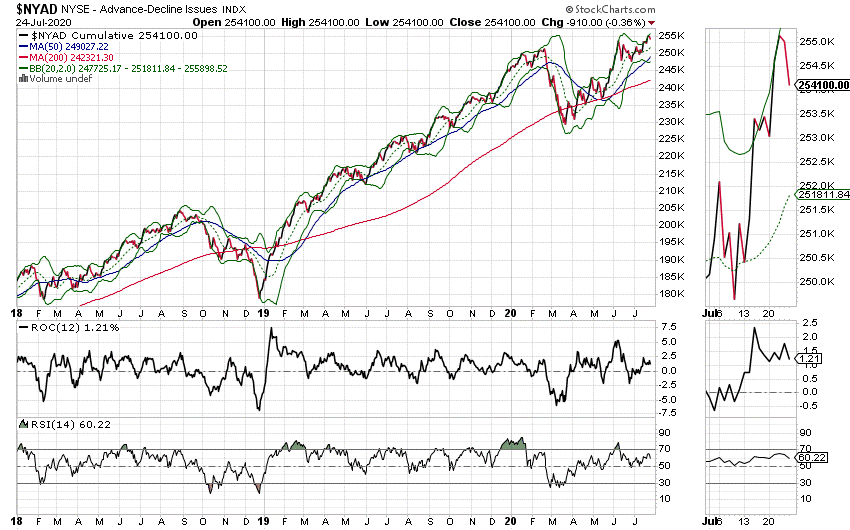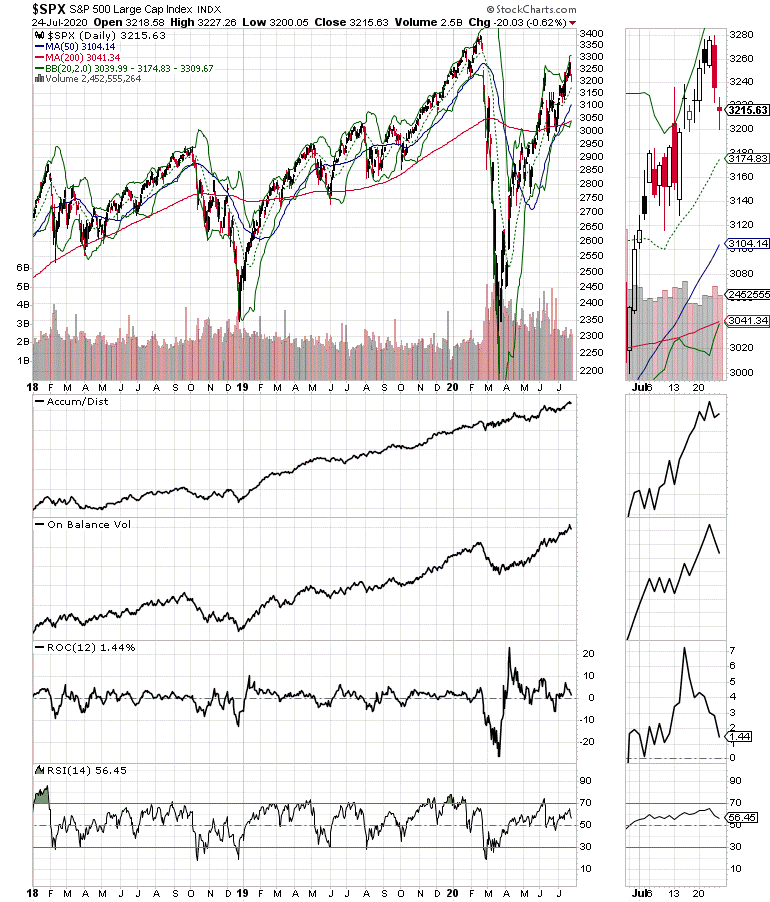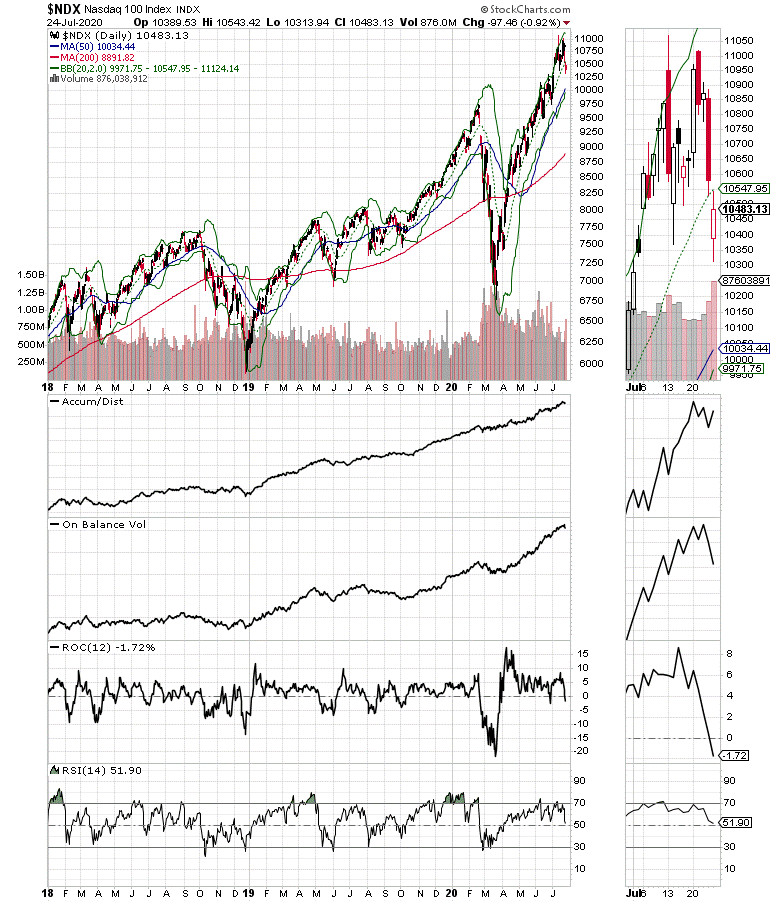Joe Duarte explains how Fed interventions and market movement are trumping the influence of traditional economic indicators.
For investors, at least in the present, it’s not what the economy can do to the markets that matters most. Instead it’s what the Federal Reserve can do to the markets, to 401(k) plans and to trading accounts that should keep us up at night.
We are in a new world, where in a complete reversal of traditional relationships. The markets are driving the economy and the Federal Reserve and global central banks are driving the markets. Moreover, contrary to the past, the key to the dynamic system composed of the financial markets, the economy, and people’s lives (MEL) is not the state of the economy, but the current and future status of the stock market and its effects on the average person’s 401(k) plans and their trading accounts.
This in turn means that as long as the stock market keeps rising, the fallout from a recession may be lower than the traditional economic models would suggest, barring a truly extraordinary set of events beyond what we’ve already experienced.
The Times; They are a Changing
Conventional wisdom and traditional economic theory are based on static idealized and decades old mathematical models and inflexible observations and theories which only work when conditions are ideal, which is almost never. Indeed, it is this simple reason that even traditional economists admit that their craft is not always accurate, especially during periods of rapid change. Meanwhile MEL is a real time system whose basic principles are based on the emerging science of complexity, the always in motion invisible forces of the Universe which force events and reactions to events.
So, unlike the traditional models based on perfect world equations and expectations, rather than standing still MEL never stops. In fact, MEL’s most basic principle is that the interaction between its components, its agents such as people and businesses, and the environment: which are always in perpetual motion. Specifically, it is when the interactions between all the agents in the system coalesce around a central environment point, known as the Edge of Chaos, and when the chemistry and physics that take place at the edge reach the boiling point, like an erupting volcano, that systems emerge to their next level.
We are at a point of Emergence
Currently, there is no better example of the MEL dynamic than what we are seeing in the record setting housing market where the combination of riots in the streets of large cities, record low mortgage rates and record stock markets driven by frantic central banks are fueling the migration of people to the suburbs and other locations where they perceive they will be safer. In other words, the markets in the form of record low mortgage rates and record high stock prices are buoying consumer balance sheets, making it possible for those who can, to qualify for a mortgage and fueling the increasingly meaningful migration.
What it means for investors is that by picking stocks in companies who are likely to benefit from the emergence of MEL to its new operating level the odds of success are likely to be higher than for those who don’t. Still, in uncertain times its best to have a tried and true method through which to exercise the lowest risk trades and to protect profits. Therefore, it’s always useful to review the guiding trading principles most useful in trading along with MEL:
- Stay with the market’s primary trend
- Don’t fight the Fed’s interest rate trend
- Take profits on positions that have made big gains and are consolidating prices or no longer acting well
- Constantly look for stocks displaying positive chart patterns when management is doing the right things for the business
- Maintain and adjust well placed sell stops as your stocks rise and
- Always be prepared for when the music stops
Especially important is the last bullet in the list, for as U.S.-China relations deteriorate, from an investment standpoint, the most important thing to note is not so much what happens, but how the market responds. This will be especially important if China decides to sell its U.S. bond holdings. Indeed, on the surface this may seem a negative, but in fact, it could be just the opposite as the Federal Reserve would likely buy a lot of new bonds and possibly increase the amount of money it infuses into the banking system. This in turn would likely fuel another round of stock buying and could lead to the next emergence point in MEL.
It may sound strange, but in this new world, what once seemed impossible is not just plausible but likely. See tomorrow’s report for an example.
NYAD Holds above Support
The New York Stock Exchange Advance Decline line made a new high this week before rolling over as rising tensions between the U.S. and China boiled over (see chart below). Nevertheless, NYAD held well above the support of its 20- and 50-day moving averages. That means that the uptrend gets the benefit of the doubt for now.

The S&P 500 (SPX) also held above key support, not breaking below 3200, its 20- or its 50-day moving averages (see chart below).

On the other hand, the Nasdaq 100 Index (NDX) broke below its 20-day moving average as profit taking accelerated on bad news from Intel on its next generation chip hit the wires on Thursday afternoon (see chart below). Of some concern also was the break below on the rate-of-change (ROC) indicator, which is a sign that upside momentum has now weakened significantly.

Accumulation Distribution (ADI) and On Balance Volume for NDX and SPX turned slightly negative.
Watch Your Stocks First, then the Market
Because trading algorithms have a greater effect on the pricing of the major stock indexes, a very bad day for the market may or may not be as negative for your own portfolio. That’s because your stocks may not be in the primary sell matrix that the algos concentrate on. In other words, while the major trend will eventually affect most stocks if it remains in place long enough, when making buy or sell decisions, it’s best to primarily focus on the price action of your stocks and on the value of your account.
Moreover, as the U.S. and China’s relationship sours, expect more daily market volatility, especially in overnight futures markets and in the price action of the major indexes. Best of all, by following the sound trading principles described above, and concentrating on your own portfolio and how it performs against the market, it will be much easier to make the right decision with any stock you own.
To find out more about stocks that should benefit from the MEL phenomenon consider a FREE trial to Joe Duarte in the Money Options.com, click here. And check out my latest edition of Stockcharts.com’s Your Daily Five, titled “Five Stocks with Explosive Potential” where I reveal five stocks that are poised to benefit in a big way from the latest trends in MEL.
Joe Duarte is a former money manager, an active trader and a widely recognized independent stock market analyst since 1987.





















